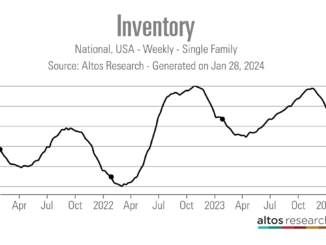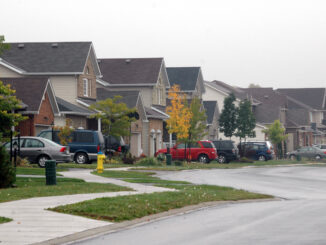
NBER working paper estimates that every percentage-point increase in remote work causes a 0.93% increase in house prices.
- The report notes that housing prices nationwide rose 23.8% from December 2019 to November 2021, “the fastest rate on record.”
- At the same time, the COVID-19 pandemic “has reshaped the way households work, with 42.8% of employees still working from home part or full time by November 2021.
U.S. house prices have increased nearly 24% since 2019, and more than half of that growth can be attributed to the shift to remote work during the COVID-19 pandemic, according to a new report.
“Housing Demand and Remote Work,” a 61-page working paper produced for the National Bureau of Economic Research (NBER), a nonprofit research organization based in Cambridge, Mass., estimates that every percentage-point increase in remote work causes a 0.93% increase in house prices.
The report notes that housing prices nationwide rose 23.8% from December 2019 to November 2021, “the fastest rate on record.” At the same time, the COVID-19 pandemic “has reshaped the way households work, with 42.8% of employees still working from home part or full time by November 2021, and some evidence that a significant fraction of current remote work may be permanent.”
Among the findings, the report:
- Identifies a large effect of the shift to remote work on house-price growth in a cross-section of U.S. micro- and metropolitan areas using pre-existing exposure to the propensity for remote work. It found similarly-sized effects of remote work on residential rent-price growth.
- Isolates the effect of remote work on house prices from the overall effects on demand caused by migration, stating that migration accounts for one-third of the total effect of remote work on house prices. “Extrapolating from the remaining two-thirds implies that the shift to remote work accounts for at least half of the total increase in aggregate home prices.”
“This cross-sectional estimate, combined with the aggregate shift to remote work, implies that remote work raised aggregate U.S. house prices by 15.1%,” the report states. “Using a model of remote work and location choice, we argue that this estimate is a lower bound on the aggregate effect.”
“Our results suggest that house price growth over the pandemic reflected a change in fundamentals rather than a speculative bubble, and that fiscal and monetary stimulus were less important factors,” the report states. “This implies that policymakers need to pay close attention to the evolution of remote work as an important determinant of future house price growth and inflation.”
The working paper was produced by John A. Mondragon, a research adviser for the Federal Reserve Bank of San Francisco, and Johannes Wieland, an associate professor of economics at the University of California, San Diego. The views expressed in the report are the authors and do not necessarily represent those of NBER or the Federal Reserve Bank of San Francisco. NBER working papers are circulated for discussion and comment purposes. They have not been peer-reviewed nor been subject to the review by the NBER Board of Directors.
Source: Nationalmortgageprofessional.com



